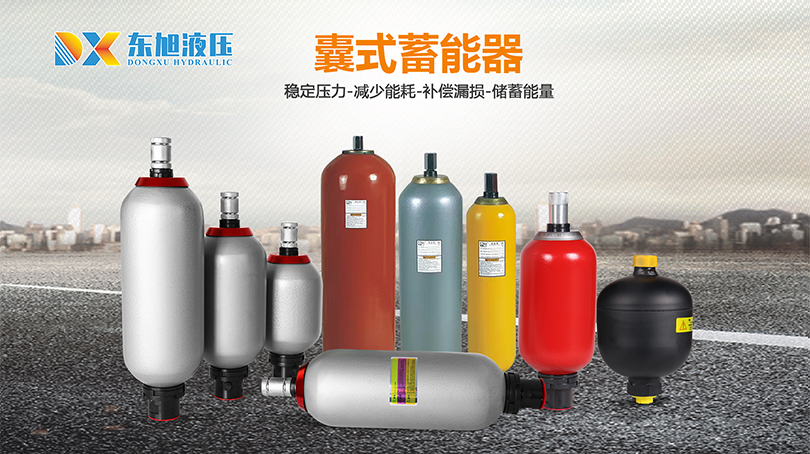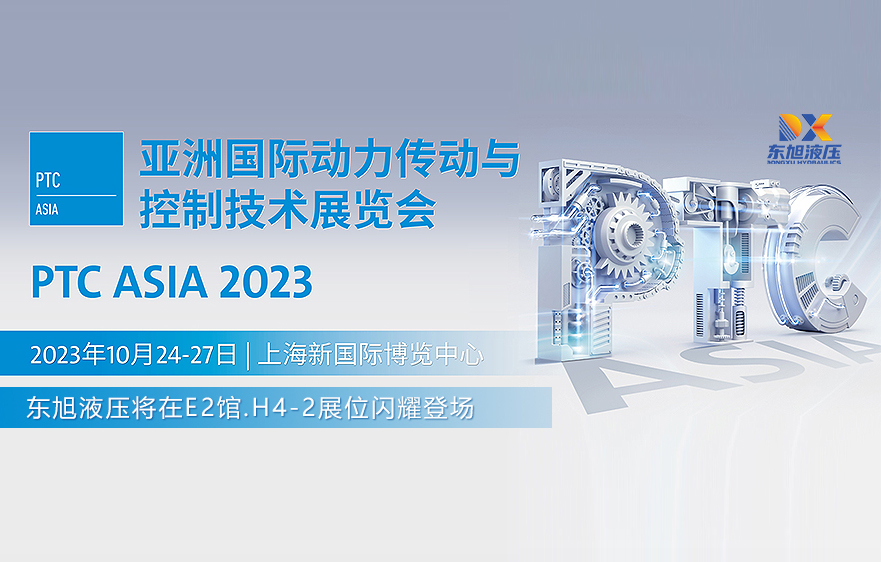
Accumulator selection elements
Dongxu Hydraulics-Dongxuda Capsule Accumulator》》》
●Over the years Dongxuda/accumulators from Dongxu Hydraulics have been used in a wide range of industrial applications and have been recognised by our customers. In order to achieve the best performance and longest service life of these accumulators, it is necessary for you to strictly observe the product selection criteria described in this chapter. For a better understanding of what follows, here is a brief explanation of some of the more important formulas and terms.
●
(Limit) Working pressure
It is the pressure of the inflated accumulator in the hydraulic system after filling with working fluid.
P1 = minimum working
P2 = maximum working pressure
P3 = maximum permissible pressure in the hydraulic system (pressure adjustment, pressure limit, P3 ≤ 0.9 x P4)
Pm = average working pressure
●Permissible ultimate working pressure P4
is the maximum design pressure of the accumulator, which can be found in the technical documentation or on the factory marking of the accumulator (e.g. nameplate, steel stamp).
●Filling pressure P0
Is the hydraulic accumulator has not been filled with working fluid, the pressure in the gas chamber, filling pressure is generally converted to room temperature (20 ℃) to give
●Allowable pressure ratio P2/P0
is a value specified by the manufacturer in relation to the flexing action of the bladder and its life, e.g. 8:1; this value must not be exceeded.
Allowable pressure fluctuation range△Pperm
In the specified number of reciprocations, the maximum pressure difference between the working pressure P2 and P1, and P2 ≤ P4
Correct selection of ultimate working pressure P4
When selecting an accumulator, it is important to ensure that the maximum working pressure P2 does not exceed the ultimate working pressure P4 in any case, and that any pressure peaks that may occur are taken into account.
Pressure peaks can occur in the following situations: switching of multi-way valves, blocking of oil masses, blocking of fast flows, pressure changes in differential circuits etc.
It is important to note that pressure spikes can be so short-lived that they cannot be detected by damped measuring instruments such as pressure gauges, and safety valves are not capable of responding to such short-lived pressure spikes in a timely manner.
Correct selection of inflation pressure P0
The amount of inflation pressure depends on the expected working pressure and the type of application.
In general, the following formula can be used.
For pulsation cushioning: Po = 0.6-0.8 x Pm (Pm = mean operating pressure)
For fluctuation cushioning or volume compensation: Po = 0.6-0.9 x P1 (P1 = minimum working pressure).
Please make sure that the filling pressure does not exceed 0.9xP1 at operating temperature. filling pressure is the pressure given at room temperature, according to the law of change of gases, the gas pressure will increase with the increase of temperature.
According to the empirical formula, the pressure increases by 10% for every 30°C rise in temperature.
If the inflation pressure is too low, the skin bladder will be subjected to unnecessarily high deflection loads when the accumulator is operated at high pressure, which will reduce the service life of the skin bladder lower.
Gas leakage
Gas leakage caused by gas permeation can also lead to insufficient air pressure. When the bladder in the accumulator, which acts as a liquid-gas separator, is not absolutely impermeable, the gas molecules penetrate through the bladder and dissolve in the working fluid, which then enters the tank. Afterwards, the gas molecules will be separated from the working fluid again. The degree of gas leakage is proportional to the working pressure and a power function of the temperature. When other conditions do not change, gas leakage will continue to accelerate the rate of filling pressure reduction, a phenomenon that is particularly evident in small-capacity accumulators.
Depending on the operating pressure and temperature, the manufacturer can estimate the possible gas leakage and filling pressure loss, from which the required maintenance intervals for the accumulator can be calculated.
Too low a filling pressure leads to further pressure losses due to gas leakage, and the storage capacity of the accumulator does not reach the desired value, all other operating conditions being equal. The service life of the accumulator is shortened due to overloading of the skin and air bladders, which are the separating elements between the liquid and the gas. The shock absorption capacity of the accumulator is also reduced and any pressure peaks may exceed the permissible limit operating pressure. Therefore, the inflation pressure must be carefully checked and pressurised from time to time to ensure that the accumulator operates in a suitable condition. Accumulator filling pressure can be checked using a filling device either directly at the filling connection or by applying pressure at the inlet.





